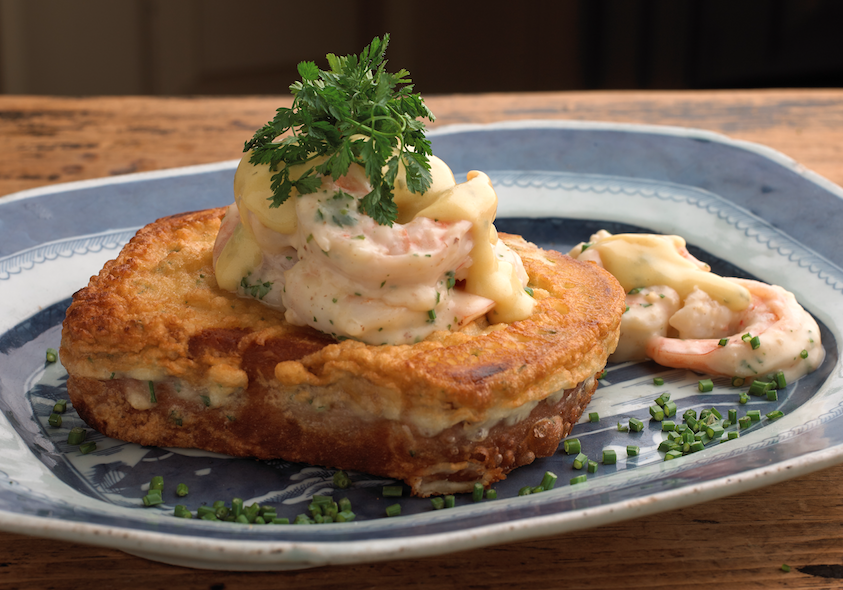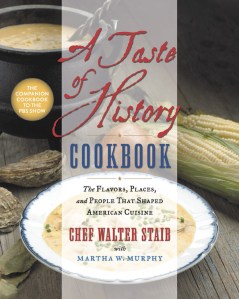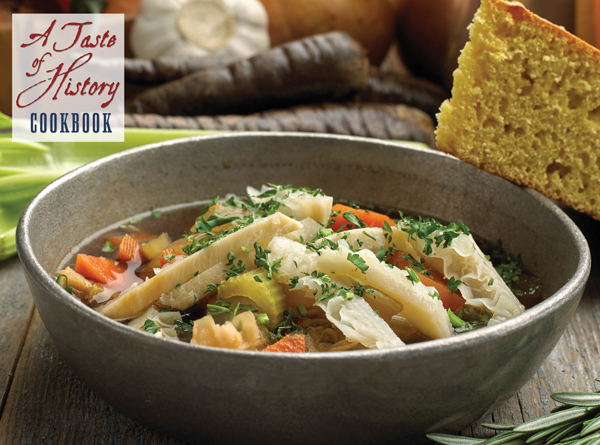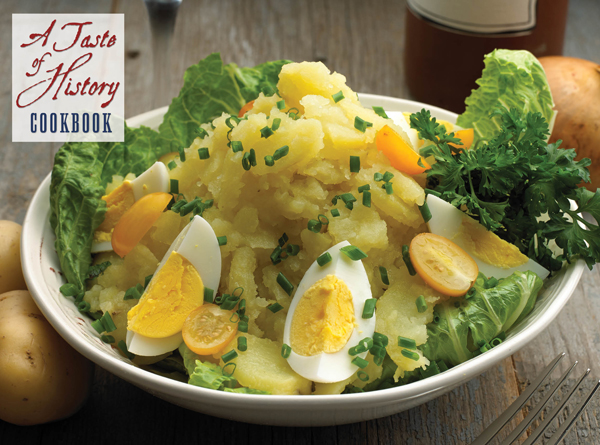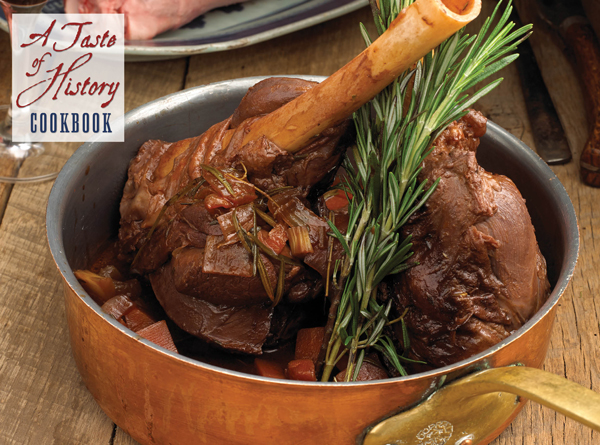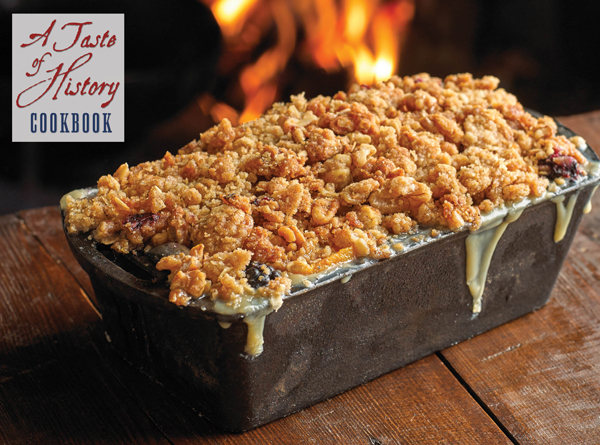SHRIMP TOAST
A TASTE OF HISTORY COOKBOOK provides a fascinating look into 18th and 19th century American history. Featuring over 150 elegant and approachable recipes featured in the Taste of History television series, paired with elegantly styled food photography, readers will want to recreate these dishes in their modern-day kitchens. Woven throughout the recipes are fascinating history lessons that introduce the people, places, and events that shaped our unique American democracy and cuisine. For instance, did you know that tofu has been a part of our culture's diet for centuries? Ben Franklin sung its praises in a letter written in 1770!
With recipes like West Indies Pepperpot Soup, which was served to George Washington's troops to nourish them during the long winter at Valley Forge to Cornmeal Fried Oysters, the greatest staple of the 18th century diet to Boston's eponymous Boston Cream Pie, A TASTE OF HISTORY COOKBOOK is a must-have for both cookbook and history enthusiasts alike.
SERVES 6
See Season 2, Episode 204
The colonial recipe for this dish was called “To Butter Shrimps,” and it was most often served over a sippet, the colonial term for fried bread. Versions of “buttered shrimp” recipes from this era vary widely; Martha Washington’s called simply for shrimp, butter, and pepper. This recipe more closely follows the elegant version found in Eliza Smith’s The Compleat Housewife: Or Accomplished Gentlewoman’s Companion—printed in 1742, it was the first cookbook published in the colonies.
For this recipe, I like to use a quality bread that is slightly stale. I purchase a loaf of bread and leave it out for a day, a step that makes it firm enough to maintain its form.
INGREDIENTS
- 2¼ cups all-purpose flour
- 3 eggs, beaten
- 2¼ cups whole milk
- 1½ tablespoons clarified butter or olive oil
- 1 tablespoon finely chopped fresh basil
- 1 tablespoon finely chopped fresh parsley, plus more for garnish
- 1 tablespoon finely chopped fresh thyme leaves
- 1 tablespoon finely chopped fresh chives
- Pinch of freshly grated nutmeg
- Pinch of kosher salt
- Pinch of freshly ground white pepper
- 8 tablespoons (1 stick) unsalted butter
- 6 slices Sally Lunn Bread or other fine-crumb bread, cut 1½ inches thick (see Chef’s Notes)
- 1 garlic clove, minced
- 1 small shallot, minced
- 1½ pounds extra-small shrimp, shelled and deveined
- ¼ cup dry white wine, such as Sauvignon Blanc
- 1 cup Béchamel Sauce, warmed
DIRECTIONS
In a large mixing bowl, whisk together the flour, eggs, milk, clarified butter, basil, parsley, thyme, chives, nutmeg, salt, and pepper.
Heat 6 tablespoons of the butter in a large skillet over medium heat. Dip the bread slices into the batter, place in the pan, and cook until both sides are well browned, about 3 minutes per side. Remove from skillet and keep warm.
Heat the remaining 2 tablespoons butter in a separate pan over medium heat. Add the garlic and shallot and sauté for approximately 3 minutes, or until translucent but not browned. Add the shrimp and sauté for 3 to 5 minutes, until they are completely pink.
Add the wine to deglaze the pan, loosening any browned bits on the bottom of the pan with a wooden spoon. Cook for approximately 3 minutes, or until the wine is reduced by half.
Stir in the béchamel and remove from the heat.
Using a cookie/biscuit cutter or tip of a knife, cut a 2-inch-diameter round hole from the center of each piece of bread; place a slice of bread on individual plates. Spoon a portion of the shrimp mixture into each hole, being sure to dribble a little sauce over the rest of the slice. Lean the toasted bread cut-out at an angle on the shrimp and sprinkle each serving with parsley. Serve immediately.
CHEF’S NOTES
- It is important to use a serrated knife when cutting bread. A smooth blade will crush a loaf of bread, whereas the saw-like blade of a serrated knife will not.
- Making the toast is very similar to making French toast. I recommend that you use a well-seasoned cast-iron skillet or a nonstick skillet; it is impossible to finish this recipe successfully if the toast sticks to the pan.
MORE RECIPES FROM A TASTE OF HISTORY
By clicking ‘Sign Up,’ I acknowledge that I have read and agree to Hachette Book Group’s Privacy Policy and Terms of Use
